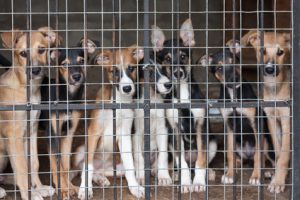Principles of Stray and Feral Management Certificate
- The Stray Animal Course is designed to be an introduction to the subject of assisting stray and feral dogs and cats. It is of particular relevance to Animal Welfare Officers, International Animal Carers, Veterinary teams, Volunteers and Animal Care professionals.
- This course provides students with an understanding of the stray animal problem, and information on some of the humane strategies for managing stray animal populations.
- Of the estimated 600 million dogs in the world, approximately 80% are strays and a similar figure for cats. Stray animals are one of the most visible animal welfare problems around the world, suffering disease, hunger, injury and often inhumane culling.
*You will have access to the course for 6 months only, after which, you can purchase extensions.
Unit 1
Understanding the problem
Learn about the causes of feral & stray cat and dog populations including: Over-breeding; human neglect, ignorance, influence of tourism & tourists, breeders, attitude & social differences. This section includes international comparisons between the UK, Asia (e.g. India, Bangladesh, Pakistan), Far East (e.g. Indonesia, Thailand, Malaysia, China), Caribbean (mainland & islands), Europe (e.g. Spain, Portugal, Italy, Baltic regions);
Understand the reasons for the management of stray & feral populations.
Unit 2
Assessing the size of the cat & dog stray/feral population in an area
In this unit of the stray animal course, you will gain an understanding the welfare issues faced in various regions, how to assess and measure the extent of the population and how to address the problem with minimum impact on the local community.
Learn the various methods of population size assessment and the equipment & materials required for assessment
Information on population size assessment includes: Counts, local human population co-operation, capture, estimates, age of dogs/cats (pup/kitten numbers, breeding females).
Unit 3
Understanding and choosing the most appropriate solutions
There are several solutions and this unit explores the various solutions and how to choose the most appropriate one for each situation.
This unit includes information about controlled scientific approaches to neutering, local community education, government legislation, registration/identification, reducing reproduction/commercial supply, re-homing and foster homes, spaying & castration, vaccinations, parasite control and euthanasia.
Learn about the issues involved in the solutions such as: Volunteer & equipment availability; re-homing site availability; foster homes; vaccinations; euthanasia; parasite control: funding, veterinary support, charitable organisation support; local community; human: local income & priorities; cultural differences & diversity: attitudes, needs, perceived interference; financial: costs of solutions e.g. neutering v euthanasia (‘culling’).
Learn how to compare, contrast & evaluate the most appropriate solutions including: Costs, benefits and issues of each solution.
Unit 4
Evaluating progress and monitoring intervention results
Learn about the process of evaluating progress and how to monitor results to evaluate the success of the project.
Learn how to monitor processes including: Data collection; observation; local community; repeat visits; persons involved: training, support; importance of monitoring.
Learn how intervention methods are monitored & about the importance of performing scientific monitoring.
We offer a selection of accredited and employer recognised courses specifically designed for careers working with animals.
If you have any questions about our courses, please contact us.
We’ve assisted many people to achieve their goal to work with animals. Read more about our 5-star reviews and student success stories.
Gain relevant training to achieve your goal to work with animals.


